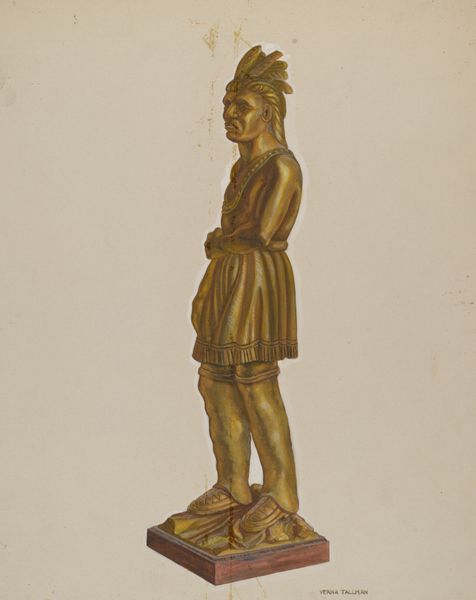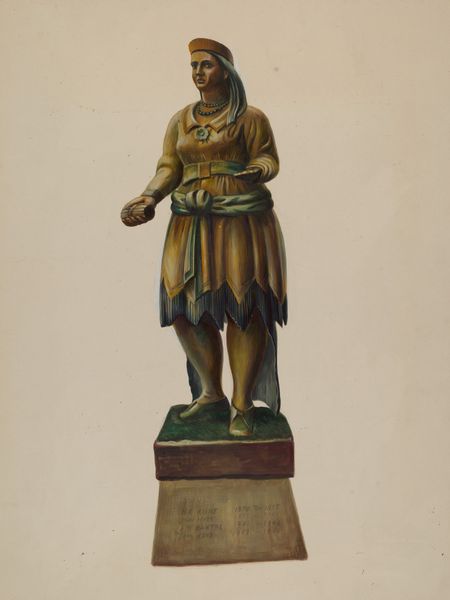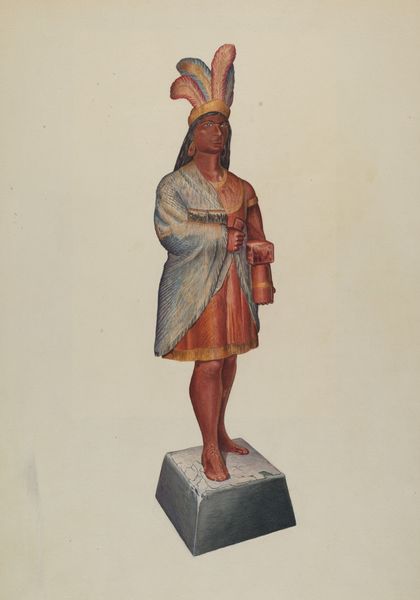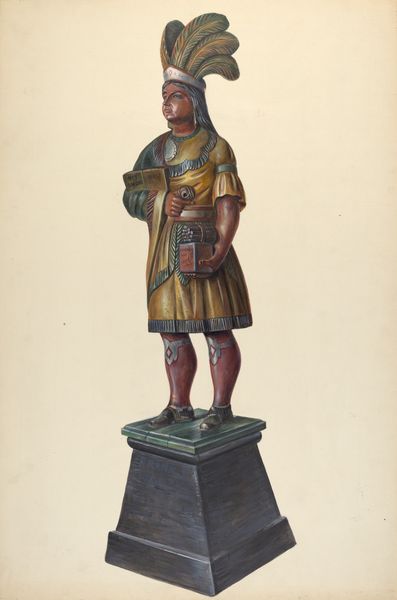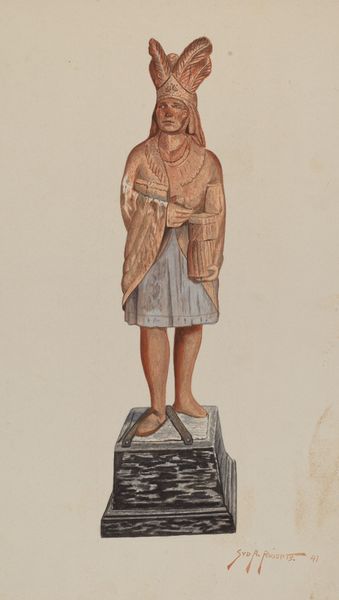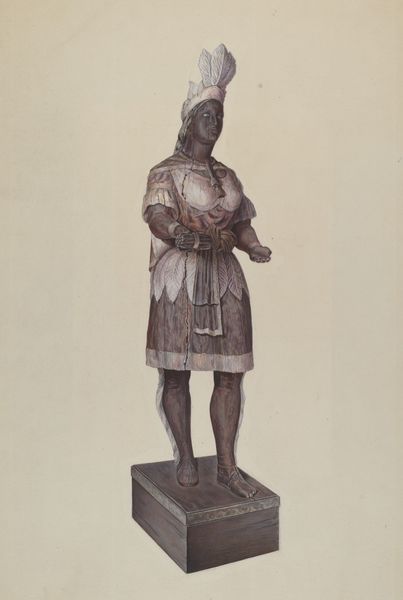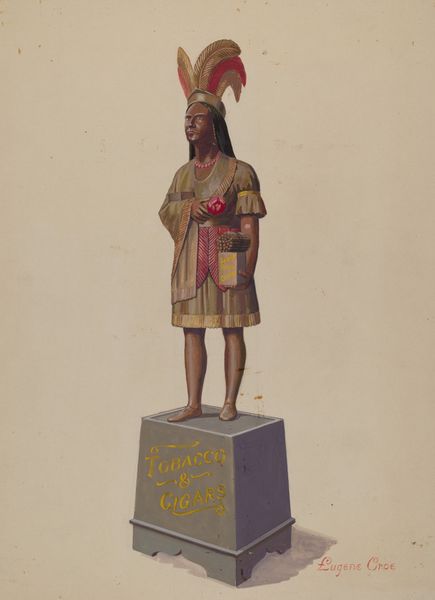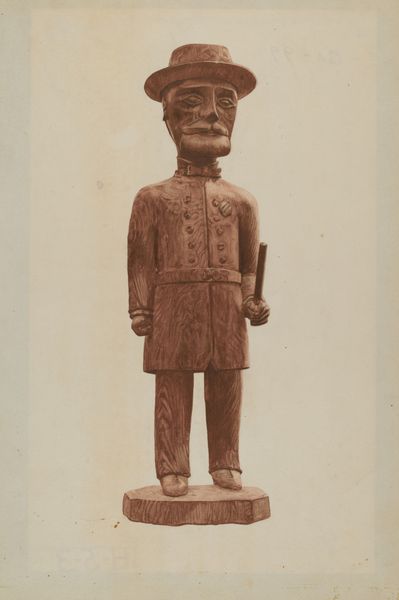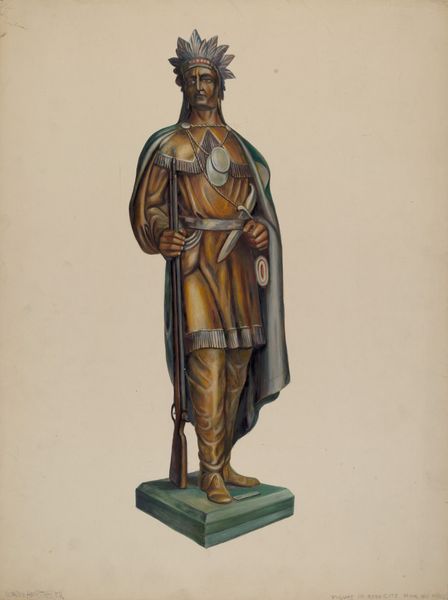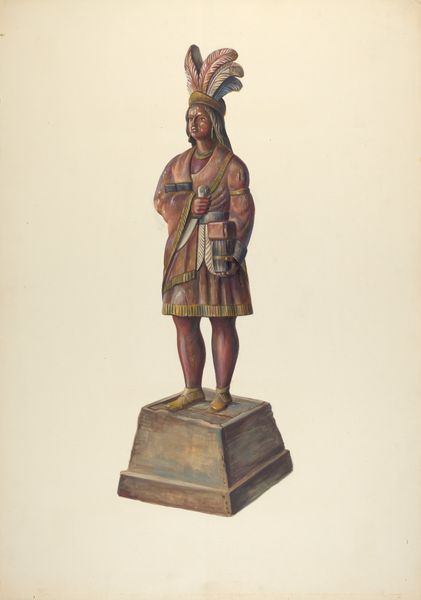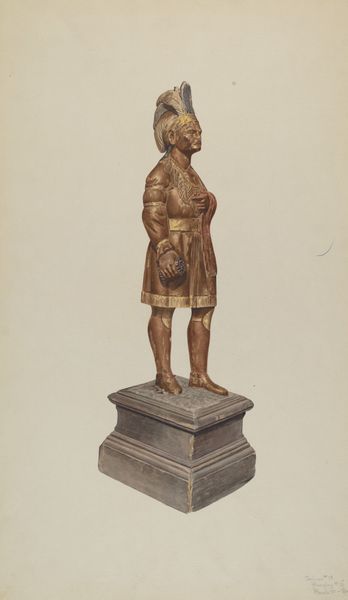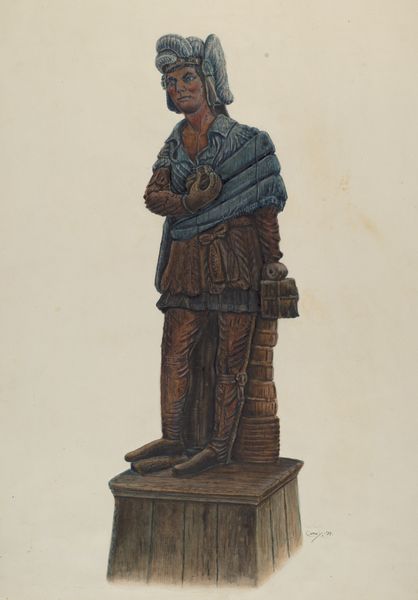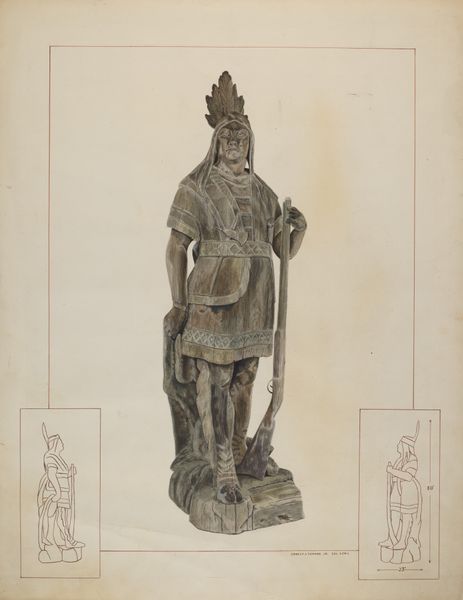
drawing, pencil
#
pencil drawn
#
drawing
#
figuration
#
pencil drawing
#
pencil
#
portrait drawing
#
watercolor
Dimensions: overall: 42.7 x 31.8 cm (16 13/16 x 12 1/2 in.)
Copyright: National Gallery of Art: CC0 1.0
Curator: The gaze in this portrait is disquieting, a complex study in cultural representation that echoes complicated history. Editor: Yes, there is an unmistakable solemnity, a directness in the subject's expression. I see strength and something akin to resignation. Curator: The piece, dated circa 1941, is entitled "Cigar Store Indian" by Violet Hartenstein, crafted with pencil and watercolor. The medium itself is noteworthy, elevating what was once a ubiquitous commercial figure to fine art through meticulous rendering. Editor: Indeed. The traditional figure—meant to lure customers into tobacco shops—becomes, in Hartenstein's hands, a focal point for examining how Indigenous people were marketed and, often, misrepresented. Notice the careful details: the feathered headdress, the ceremonial garb… it all speaks to constructed identity. Curator: Precisely. These symbols became synonymous with a romanticized vision, a "noble savage" trope popular for centuries. Hartenstein’s meticulous technique invites us to see beyond that simplistic stereotype, compelling us to confront our own cultural assumptions. The symbolic weight is intense, even haunting. Editor: It also raises critical questions about appropriation. This is not just a drawing of a statue. It is a drawing *about* a statue, and that statue, originally, perpetuated stereotypes for commercial gain. The layering of representation complicates our response, ethically speaking. What does it mean to recast such loaded iconography as fine art? Curator: I would add that within these depictions lies a cultural memory both Indigenous and European; a shared visual lexicon built on exchange—both desired and forced. We are not passively observing an image, we're engaging in an active interrogation of identity and its varied cultural artifacts. Editor: And perhaps that is the work’s strength. By focusing our attention, Hartenstein reveals just how potent these images remain in shaping public perception and even fueling societal bias. It urges a deeper reflection on the narratives we choose to perpetuate. Curator: It's fascinating to consider how a relatively modest piece—a drawing on paper—can become such a potent mirror. Editor: A potent mirror, reflecting both our history and the ongoing need to deconstruct damaging imagery.
Comments
No comments
Be the first to comment and join the conversation on the ultimate creative platform.

